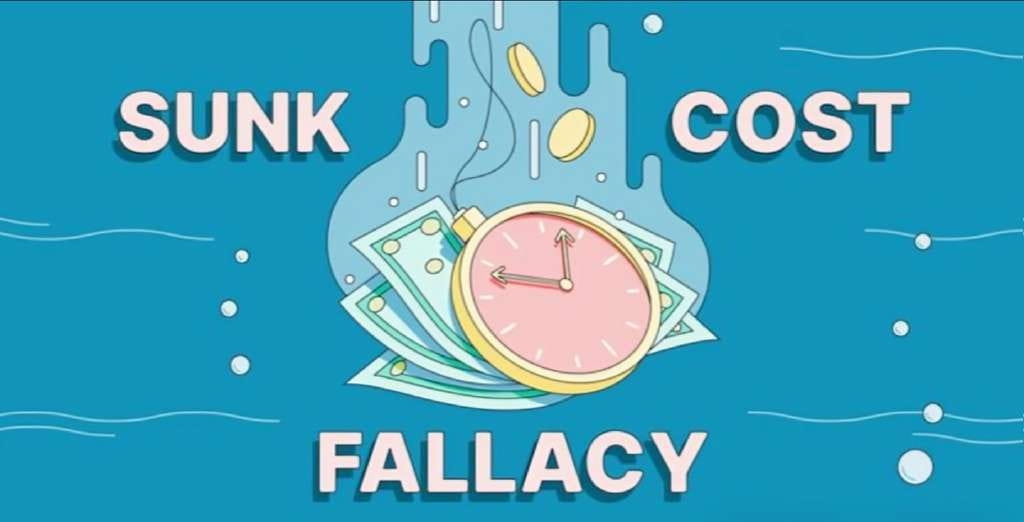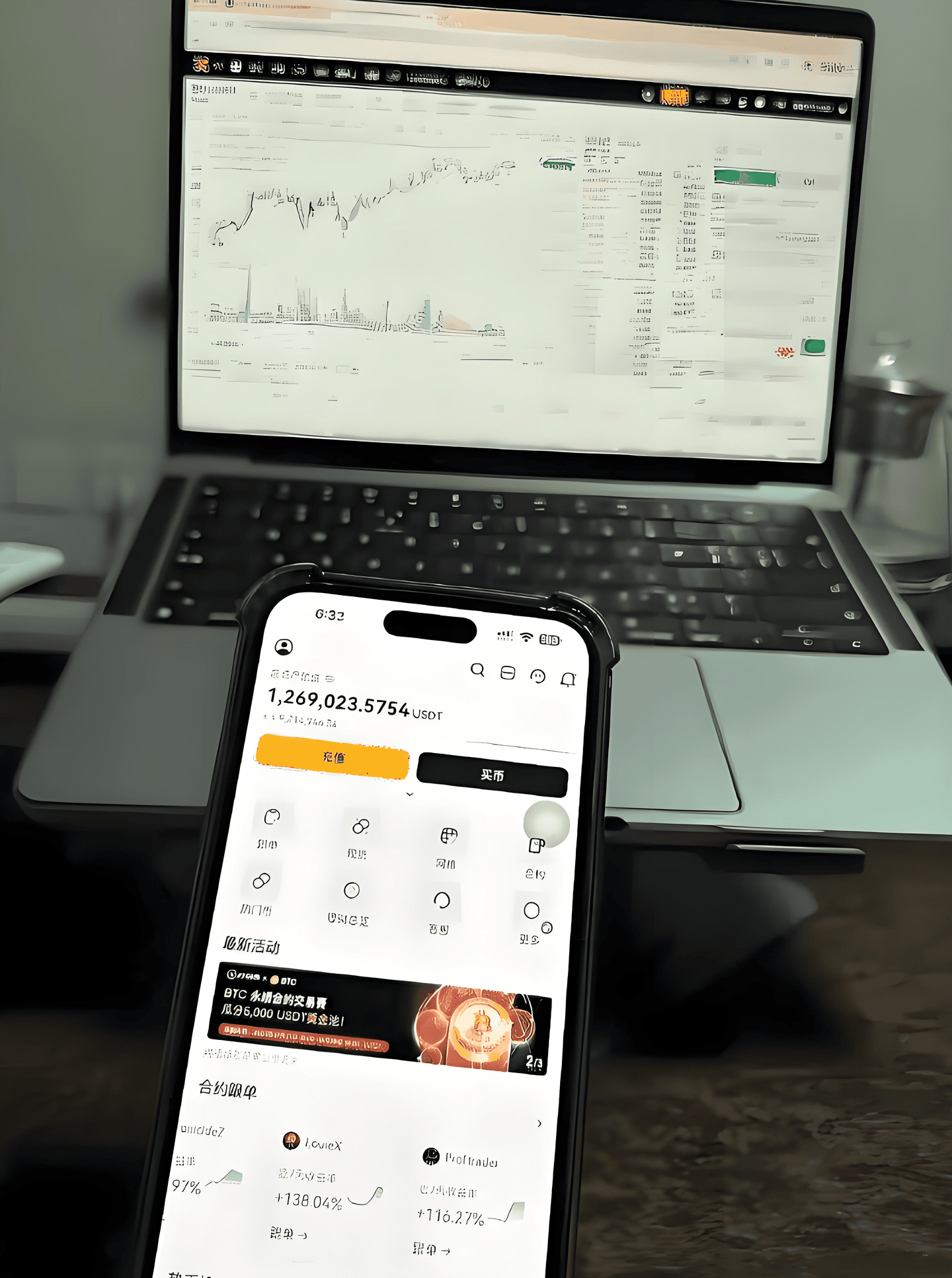Ethereum's breakout: history repeats itself, initiating a 'monumental' new cycle.

When Bitcoin grabs the headlines, the entire crypto market pays close attention. But behind Bitcoin's shine, there is a familiar story for seasoned investors: Ethereum will ultimately become the focal point—and when it does, other altcoin seasons often follow.
Now, this story is playing out again.
01, Data does not lie.
In the past month, the price of Ethereum has surpassed $4,700—its highest level since the end of 2021. It has risen over 30% in the past seven days, outperforming Bitcoin, indicating new strength.
More importantly, Ethereum has recently broken through the $4,000 resistance level, which had restricted its price for several months. This is not a tentative breakthrough—but a decisive action supported by a surge in trading volume and institutional participation. Technical analysts are currently discussing target price levels in the range of $6,000 to $8,000 if the current momentum continues.
02, Why is Ethereum surging now?
Ethereum's rise is not just following Bitcoin's footsteps—it has its own strong driving factors.
Institutional recognition.
The biggest advancement for Ethereum in 2025 is the introduction of spot ETH ETFs in the US market. Giants like BlackRock, Fidelity, and Grayscale now offer opportunities for direct investment in ETH.
Massive trading volume—over $120 billion in just a few months—capital inflows remain stable. This is not merely retail speculation; pension funds, wealth management companies, and corporate treasuries are incorporating ETH into their portfolios.
Stablecoin regulation has become favorable.
The GENIUS Act passed in the US provides clear guidelines for stablecoins, which has direct implications for Ethereum.
Why? Because most stablecoins—like USDT, USDC, etc.—are primarily issued on Ethereum. The adoption of stablecoins drives Ethereum's trading volume, increases demand for gas, and solidifies its position as the global settlement layer for capital flows.
Demand for corporate balance sheets
Small and medium-sized listed companies are quietly adding Ethereum to their balance sheets. Reuters reports that corporate holdings of ETH have jumped from 116,000 ETH at the end of 2024 to nearly 1 million ETH by mid-2025—valued at approximately $3.5 billion.
These companies are not merely buying for price appreciation—they are earning 3-4% annualized returns through staking ETH, turning it into a productive asset.
Macroeconomic tailwinds.
The broader economic backdrop is also supportive. With the Federal Reserve hinting at potential rate cuts later this year, risk assets—from stocks to cryptocurrencies—are receiving support. Lower interest rates make staking ETH and other yield-generating digital assets more attractive compared to bonds or savings accounts.
03, Cycle: Bitcoin leads, Ethereum follows, and altcoin season chases.
Looking at the big picture, Ethereum's rise is not surprising—it aligns with patterns we have seen multiple times.
Phase one—Bitcoin dominance: Bitcoin rises first, attracting institutional capital and mainstream attention.
Phase two—Ethereum breakout: Once Bitcoin stabilizes, capital will shift towards ETH. The percentage increase of ETH will surpass that of BTC.
Phase three—altcoin season: As ETH rises, smaller altcoin seasons follow—often yielding greater returns than BTC and ETH.
We have seen this scenario in both 2017 and 2021. In each instance, Ethereum's rise marked the beginning of a broader altcoin season surge. Now, a similar sequence seems to be forming.
04, Why is Ethereum's role in the cycle so critical?
Ethereum is not just 'another altcoin season.' It is the infrastructure for the most important use cases in cryptocurrency.
Decentralized Finance (DeFi)—tens of billions of dollars in trading, lending, and yield farming occur daily on Ethereum.
NFTs and digital assets—Ethereum remains the leading market for NFTs.
Stablecoins and payments—most stablecoin transfers occur on the Ethereum network.
Layer 2 ecosystems—networks like Arbitrum, Optimism, and Base all settle on Ethereum, bringing more foundational security fees.
When ETH rises, it sends a signal: the market is ready to take on more risk beyond Bitcoin.
05, Are we entering altcoin season?
Several indicators suggest the answer is affirmative.
ETH outperformed BTC: In the past month, ETH rose about 54%, while Bitcoin only rose about 10%.
BTC's dominance is declining: Bitcoin's share of the total market capitalization in the crypto market is decreasing—this is an early sign of capital rotation.
Altcoin season index rising: the index tracking the strength of altcoin season relative to Bitcoin has risen from the 20s to the 30s, indicating an upward trend.
If this pattern continues, Ethereum's momentum could trigger a chain reaction in altcoin season—historically, this often leads to the most explosive movements in the crypto market.
06, What could interrupt the rise.
Even though the situation looks bullish, it is worth remembering that nothing rises straight up.
Regulatory uncertainties: If US or EU regulators take action regarding staking, DeFi, or the security status of Ethereum, momentum may slow.
Macroeconomic shocks: Unexpected inflation, geopolitical tensions, or sudden shifts in Federal Reserve policy could suppress risk appetite.
Profit-taking: After a significant rise, traders often take profits, leading to sharp but temporary pullbacks.
For long-term investors, the key is to separate short-term fluctuations from structural driving factors—because these driving factors remain strong.
07, Why this time might be bigger.
The breakout prior to Ethereum happened before the current scale of institutional adoption. There were no spot ETFs in 2017 or 2021. Corporate balance sheets did not actively accumulate ETH. The settlement volume of stablecoins was merely a fraction of today’s.
Now, the fundamentals align with cyclical patterns:
Institutional capital inflows are sustainable, not speculative.
Through staking, ETH has a yield component, making it competitive with traditional yield products.
The clarity in stablecoin regulation has strengthened the foundational use cases for Ethereum.
This combination may make Ethereum's next wave of increases more enduring—possibly even stronger.
08, Strategic investors' operational guide.
If history repeats itself, here are the sequences to watch for:
Bitcoin surge: We have already seen—BTC's breakthrough of $120,000 has laid the foundation.
Ethereum acceleration: This is happening—ETH has broken long-standing resistance levels and is attracting institutional interest.
Altcoin season rotation: Pay attention to ETH's further breakthrough against BTC (the ETH/BTC ratio rising), which is a green light signal for altcoin season.
Selective positioning: During altcoin seasons, the highest quality projects often perform well first, followed by liquidity flowing into higher-risk assets.
For investors already holding ETH, the current environment supports patience and confidence. For traders, focusing on ETH's dominance and the ETH/BTC ratio can provide clues for timing entry into smaller assets.
The rise of Ethereum is not an isolated spike—it is part of a familiar market rhythm: Bitcoin leads, Ethereum follows strongly, and then other altcoin seasons awaken.
The difference in 2025 is that Ethereum's breakthrough is supported by real adoption, institutional infrastructure, and clear regulatory victories—not just speculative hype. This foundation is strong enough to support larger trends.
If history offers any guidance, the fireworks show may have just begun.
To earn a million in the crypto world, 'either rely on a big bull market and hold on, or hit a jackpot coin, or use high leverage to bet in the right direction.' But most people lose money, so don’t just look at the stories of riches; first, think about how much risk you can bear.
If you are also a technical enthusiast in the crypto space, click on the coin homepage.
Click on my profile to follow me for first-hand information and in-depth analysis!

Truly profitable traders all have these seven thinking models in their minds! Cognitive dimensions that retail investors will never learn.

The performance gap between professional traders and retail investors does not solely stem from differences in information access or capital scale—the core difference lies in the way traders think. While most retail investors continue to lose money, professional traders in hedge funds and trading firms can consistently profit across different market cycles. This disparity mainly arises from the thinking models they rely on to interpret the market and make decisions.
Thinking models are cognitive frameworks for understanding how the world operates. In trading, they act as cognitive filters, helping traders extract useful information from complex and noisy market data. Professional traders internalize these models through experience, mentorship, and deliberate practice; while most retail investors are not even aware of their existence.
Behavioral finance research has repeatedly confirmed: what influences financial decision-making is far from just technical knowledge, but cognitive biases. Understanding the following seven key thinking models will help bridge the performance gap between ordinary traders and professional traders.
1. Confirmation bias
Confirmation bias refers to the tendency of individuals to only seek evidence that supports their own beliefs while ignoring or even rejecting opposing information.
In trading, this bias manifests as traders seeking various analyses to 'validate' their holdings or directional judgments while ignoring warning signals.
Research by psychologist Raymond Nickerson shows that this bias is widespread across various decision-making fields. It is especially dangerous in financial markets, as incorrect judgments directly translate to monetary losses.
Professional traders deliberately establish mechanisms to combat this bias. For instance, Ray Dalio's Bridgewater Associates implements a famous 'radical transparency' culture, encouraging all employees to challenge each other's views regardless of rank. Other professionals may do 'reverse engineering': hypothesizing that a certain trade will ultimately fail and then working backward to identify possible causes.
A typical example occurred during the dot-com bubble when many investors ignored clear risk signals in valuation data simply because they remained bullish on tech stocks. Those who actively sought counter-evidence and exited early successfully avoided massive losses.
Practical advice: Create a 'counter-evidence log' to record all evidence that contradicts your current market viewpoint. Before each entry, write down several conditions that could overturn your analysis, and objectively track the changes in these signals.
2. Loss aversion
Loss aversion refers to the emotional response to loss being significantly greater than the response to equivalent gains.
This precisely explains why many retail investors take profits too early while stubbornly holding onto losing positions—this is the root cause of long-term losses.
Professional traders design systems to counteract emotional responses. For example, setting position sizes in advance, automatic stop-loss orders, and risk exposure limits are all mechanisms to prevent losses from escalating. Legendary fund manager Stanley Druckenmiller, who famously shorted the pound, emphasized, 'Preserving principal takes precedence over chasing profits.'
One of the most successful hedge funds in history—Renaissance Technologies, founded by the late Wall Street legend Jim Simons—constructed a trading system entirely based on quantitative models, effectively eliminating emotions from decision-making, thus overcoming the negative impacts of loss aversion.
Practical advice: Treat losses as the cost of acquiring market information, rather than failures of personal capability. Through deliberate practice of small loss trades, gradually adapt and diminish emotional reactions to losses.
3. Sunk cost fallacy.
The sunk cost fallacy is when individuals continue a behavior due to the resources they have already invested (time, money, effort), rather than making rational decisions based on future prospects. In trading, this bias manifests as traders unwilling to stop loss and exit despite knowing their positions are heavily in the red, simply because 'they have already lost so much'; or continuously averaging down to 'reduce the cost.'
Research by economists Hal Arkes and Catherine Blumer shows that this bias can lead to irrational behavior across multiple fields.
Professional traders evaluate their positions based solely on current market conditions and future expectations. Legendary trader Paul Tudor Jones once said, 'I always focus more on how to avoid losing money rather than how to make money.'
During the 2008 financial crisis, many retail investors, having suffered severe losses in financial stocks, were reluctant to cut their losses, resulting in further account losses; meanwhile, professional institutions decisively cut their positions to preserve capital, waiting for more valuable investment opportunities.
Practical advice: Build a thinking framework. Whenever you're hesitating whether to continue holding a position, ask yourself: 'If I didn't have a position right now, would I buy at this price?' If the answer is no—regardless of how much you invested, now is the time to exit.

4. Opportunity cost
Opportunity cost refers to the potential returns sacrificed from other options when making a specific choice. For traders, every dollar invested in a trade could mean missing out on other potentially better opportunities.
Professional traders continuously compare their positions with all available opportunities in the market. They focus on relative value rather than absolute returns, often asking themselves: 'Is my current allocation of funds the optimal choice?'
Ray Dalio's 'Investment Holy Grail' theory is based on this concept: building 15-20 uncorrelated return curves to achieve optimal risk-adjusted returns. This method profoundly acknowledges the importance of opportunity cost in asset allocation.
Meanwhile, many retail investors, due to 'familiarity,' still cling to underperforming sectors during the industry rotation; professional traders quickly redeploy funds into assets with better risk-reward ratios.
Practical advice: Regularly compare your holdings with other opportunities on your watchlist, assessing their relative performance potential and the diversification benefits of your portfolio.
5. Anchoring effect
The anchoring effect is a cognitive bias where people overly depend on the first piece of information received (the 'anchor'), even when that information is logically unrelated to the current decision. For traders, anchoring manifests as an excessive focus on purchase prices, historical highs/lows, round numbers, etc., while ignoring current fundamental information.
Research by Tversky and Kahneman indicates that even if anchor points are meaningless, they can significantly influence subsequent judgment.
Fund managers address this bias by focusing on forward-looking indicators and valuation models rather than historical prices. They establish reasonable reference standards based on intrinsic value calculations, peer comparable valuations, and statistical analyses.
For example, after Bitcoin's significant drop from its 2017 peak, many retail investors still anchored to the historical high, believing the current price was 'very cheap'; however, Bitcoin's price at that time was still far above its long-term average. Value investor Howard Marks advocates using fundamental averages and valuation ranges as more reliable anchors, rather than recent price performance.
Practical advice: Before making a decision, proactively generate multiple reference points: including fundamental valuation, key technical levels, peer comparisons, and statistical fair value, to avoid the influence of single anchoring on judgment.
6. Survivorship bias
Survivorship bias refers to our focus on 'survivors' while ignoring the majority that have been eliminated in the selection process. This bias manifests in trading as only studying successful strategies or traders while overlooking the majority that failed. Financial media exacerbates this bias, always focusing on 'star traders' or 'popular strategies,' rarely mentioning the luck factor or the massive failures behind them.
A classic example is that many trading strategies' backtest data only show excellent results while neglecting those that performed poorly and were eliminated. Research shows that most strategies that appear 'very profitable' in backtests fail in live trading.
Professional investors systematically study both successful and unsuccessful cases. They analyze not only profitable trades but also losing positions, market crashes, and fund closures to extract lessons. Jim Simons, the late founder of Renaissance Technologies, established the company's core competitiveness by uncovering market anomalies overlooked by others.
Practical advice: Regularly conduct trading reviews, analyzing profitable and losing trades equally, and delve deeper to ask: 'Even if this trade succeeded, what could lead to failure?' Only by studying both success and failure can one build a cognitive system with greater risk resilience.

7. Dunning-Kruger effect
The Dunning-Kruger effect describes that individuals with limited knowledge in a field often overestimate their abilities; while true experts are more aware of their knowledge limitations and recognize the complexity of the field.
Research by psychologists David Dunning and Justin Kruger shows that as expertise grows, individuals' confidence initially decreases because they begin to realize how much they do not know.
Beginner traders often display unfounded confidence, while seasoned market veterans like George Soros emphasize 'fallibility' and uncertainty. Soros's theory of reflexivity posits that the perceptions and realities of market participants interact and shape one another, often in unpredictable ways, reflecting his deep understanding of market complexity.
Professional traders' confidence is built on their abilities; they maintain cognitive accuracy by continuously validating their hypotheses and actively seeking feedback. Their analytical methods include: trading decision logs, probabilistic thinking, and clear quantification of uncertainty.
During the market turmoil of the 2020 pandemic, those traders who acknowledged the unprecedented market conditions and expanded their expected outcome range performed significantly better than those who were overconfident and predicted 'certain trends.'
Practical advice: In your trading log, record the confidence level rating for each prediction. By tracking this over the long term, you will gain a clearer understanding of whether your confidence aligns with actual outcomes, allowing you to continuously calibrate your judgment.
Conclusion: Thinking models are the cornerstone of professional trading psychology.
These seven thinking models form the foundation of professional traders' psychological systems. By contrast, retail investors often focus their attention on finding 'perfect indicators' or 'magical entry points'; whereas professional traders spend years constructing a cognitive toolkit to navigate the complexities and uncertainties of the market.
The good news is that these models can be learned and applied through deliberate practice. Start with one bias, establish targeted mechanisms and processes, and use systematic methods to counteract the traps inherent in human nature.
The process of moving from retail thinking to professional cognition will not be quick or easy, but it is the most reliable path to stable profitability. Focus on your thinking style, not just technical knowledge itself, and you will build a trading advantage that can traverse market cycles.
Once you truly internalize these thinking models, you will see a different market—discovering opportunities in the chaos perceived by others, identifying risks in places most cannot detect. More valuable than any technical indicator is this cognitive advantage; it is the true dividing line that determines whether a trader can ultimately succeed.

Trading for ten years, from $30,000 to a small target: I rely solely on persistently focusing on one formation, locking my win rate at 90%.
'Ordinary people wanting to turn their fortunes around may find the crypto world to be the last window.' I engraved this saying into my bones when I entered the market with $30,000. After ten years of ups and downs, from the joy of hitting ten million to the despair of falling back to square one, to the calm of now having a small goal, I finally understand: making money in the crypto world is not about being smart, but about self-restraint—only trade one formation, and never touch anything without a formation.
1. From liquidation to guaranteed profit: I only recognize 'head and shoulders' formations.
In my early years, I was also a 'technical geek', learning moving averages one day and chasing hot topics the next. I made tens of millions in 2017 thanks to bull market luck, but lost everything in the bear market of 2018 purely based on skill. It wasn't until 2019 that I realized: complex methods don't make money; doing the simple things to the extreme is the way to go.
For the past five years, I have only focused on two formations, managing to pull my win rate above 90%.
- Head and shoulders bottom: the golden signal for reversals.
When the candlestick shows 'left shoulder-bottom-right shoulder,' and the volume of the right shoulder is greater than that of the left shoulder, it’s the entry point. In 2020, ETH formed a head and shoulders bottom at $200, with the right shoulder's volume being 1.5 times that of the left shoulder. I decisively entered, and six months later it rose to $1,400, earning me six times my investment.
- Head and shoulders top: the lifeline for escaping the peak.
Conversely, in the 'left shoulder-top-right shoulder' formation, if the volume of the right shoulder shrinks by more than 30% compared to the left shoulder, one must liquidate their position. In 2021, BTC formed a head and shoulders top at $69,000; after liquidating, I avoided the crash to $30,000 and preserved my profits of tens of millions.
These two formations hold the secret to capital: the head and shoulders bottom means 'major capital accumulation is complete,' while the head and shoulders top signifies 'capital exit warning.' My success derives from rejecting 90% of ineffective opportunities.
Two, three blood losses lead to practical guidelines that beginners must read.
1. Indicators are not about quantity; two are enough.
Don't be an 'indicator collector.' I've tried dozens of strategies and found that MACD + RSI is the most practical.
- Daily MACD golden cross (white line crossing above yellow line) + RSI rising back from below 30 = bullish signal.
- Daily MACD death cross (yellow line crossing below white line) + RSI falling back from above 70 = bearish signal.
In 2023, SOL rose from $10 to $100; I easily made 8 times my investment using these two indicators for entry and exit.
2. Half-position operation is a lifesaver.
'Full position betting' has harmed too many people; I have steadfastly maintained half a position for five years.
- Anti-volatility: In 2022, BTC fell 10%, and while the full position was liquidated, I held half my position, and when it rebounded, I added to it and made 20%;
- Steady mindset: a 10% loss only translates to 5% of the principal, won't panic into chaotic operations.
- Add to positions on profits: after a 20% gain, use 50% of the profit to add to your position, amplifying returns without risking principal.
3. Positioning: short-term practice, long-term profits.
Beginners should practice with 5-minute and 15-minute candlesticks to familiarize themselves with indicators and formations; advanced traders can capture daily formations and hold positions for 1-2 weeks. For example, in 2023, APT rose from $10 to $40, and I held my position for 12 days, earning three times my investment, which is much less stressful than day trading. I have a strict rule: only place trades between 7:30-10:30 AM and 7:30 PM-12:00 AM (US stock market hours, during volatility patterns), and I never hold positions overnight—black swan events at 3 AM can wipe out several days' profits in an instant.
Three, in trading until the end, it's about mindset.
The biggest pitfall in the crypto world is not the market itself, but human nature. I've seen too many technically skilled individuals blow up due to psychological breakdowns; these three 'anti-human' insights have saved me countless times:
- Don't believe in get-rich-quick schemes; believe in slowly becoming rich.
When I first entered the market, I fantasized about '10 times in three months,' trading over 1,000 times a year, losing 500,000 just in fees. Later, I forced myself to 'only make 5 trades a month,' and my win rate actually rose from 40% to 90%. In fact, earning 50%-100% a year is sufficient: doubling $200,000 each year results in $6.4 million in five years, enough to change one's life.
- Add positions in panic, reduce positions in greed.
When BTC fell to $16,000 in 2022, the group was filled with wails, but I added to my position—because the head and shoulders bottom formation had appeared; panic was indeed an opportunity. Later, it rose to $48,000, and when I called for 'reduce positions,' no one believed me, resulting in another drop back to $20,000. Remember: retail sentiment is always a contrary indicator.
- Accept small losses to achieve large gains.
I set a rule: if a single loss exceeds 2% of my capital, I stop trading for the day. In 2021, after losing 5% on ETH, I immediately shut down my computer, avoiding the tragedy of leveraged liquidation. Trading is like playing mahjong; experts allow small wins, but never bet big.
Four, a plan for ordinary people's comeback: how to act in the next bull market?
Choose the right targets: only trade mainstream coins in the top 20 by market cap + 1-2 trending new coins (like SUI and SEI in 2023), and avoid air coins.
Wait for the formation to appear: After the head and shoulders bottom is confirmed, enter with 30% of the position, and stop loss if it breaks the neckline.
Position-taking profit: Reduce 20% at 30% increase, reduce 30% at 50% increase, and liquidate half at 100% increase; let the remaining profits run.
Maintain sufficient cash: always keep 30% in cash to buy quality coins that are mistakenly sold off at the end of a bull market.
Big shots say, 'Opportunities in the crypto world come every four years; seize one and you can change your fate.' I have grasped two in ten years, from $30,000 to a small target, relying not on luck, but on 'being patient, handling it well, and letting go.'
Finally, a piece of advice for beginners: You can make money in the crypto world, but don’t expect to get rich without hard work. I spend four hours a day reviewing patterns, and after five years of relentless focus on one strategy, I have achieved a 90% win rate. You can be slow, but you can't be lazy—may we all reach the shore in the next bull market.
To earn a million in the crypto world, 'either rely on a big bull market and hold on, or hit a jackpot coin, or use high leverage to bet in the right direction.' But most people lose money, so don’t just look at the stories of riches; first, think about how much risk you can bear.
If you are also a technical enthusiast in the crypto space, click on the coin homepage.
Click on my profile to follow me for first-hand information and in-depth analysis!



